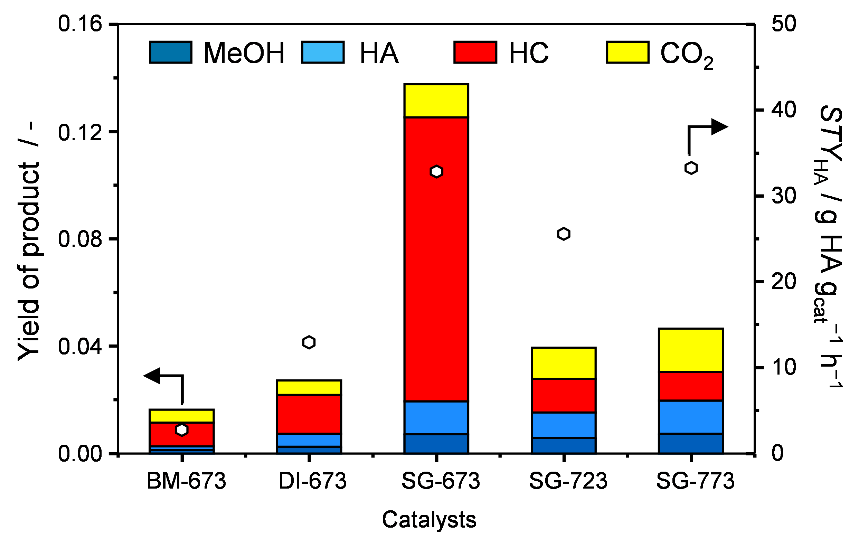Synthesis-structure-function relationships K-CoMo catalysts supported on carbon nanofibers for higher alcohols synthesis
Higher alcohols (HA) find wide application in the chemical and energy industries and are currently produced by sugar fermentation and alkene hydration. The direct conversion of syngas could comprises a potentially more environmentally-friendly and economical route for their production since it involves a single step and enables a wider exploitation of unconventional and renewable resources. Although the reaction conceptually is a combination of methanol and Fischer-Tropsch synthesis, two well-developed technologies, no catalytic system reported to date has performed sufficiently well to justify an industrial implementation, mostly due to the poor HA selectivity. We believe that the establishment of clear structure-function relationships is crucial to attain improved catalysts.1 In this contribution, we aim at identifying performance descriptors of K-CoMo-based catalysts. For this purpose, we prepare materials supported on carbon nanofibers with a low total metals loading (5 wt.%) to better control the nanostructure of the components and apply variable Co/Mo ratios (0.5−2), synthesis methods (dry impregnation (DI), sol-gel (SG), ball milling (BM)), and temperature and pressure conditions (523−773 K, 1−50 bar) upon activation by H2. The Co/Mo ratio offers a means to balance C−C coupling and CO insertion activities, different preparation methods are instrumental to attain solids with a distinct distribution of the metal precursors, and the conditions of activation are vital to ensure high dispersion and interaction of metal phases. Preliminary catalytic results indicate that the sol-gel protocol leads to superior catalysts and that higher reduction temperatures lower the activity while promoting the HA selectivity (Figure 1). Accurate testing and in-depth characterization will be combined to attain a comprehensive description of these systems.

Figure 1 Effect of synthesis method and reduction temperature (673, 723, and 773 K) on the catalytic performance of K-CoMo/CNF systems.
[1] H.T. Luk, C. Mondelli, D. Curulla-Ferré, J.A. Stewart, J. Pérez-Ramírez, Chem. Soc. Rev. 2017, 46, 1358.